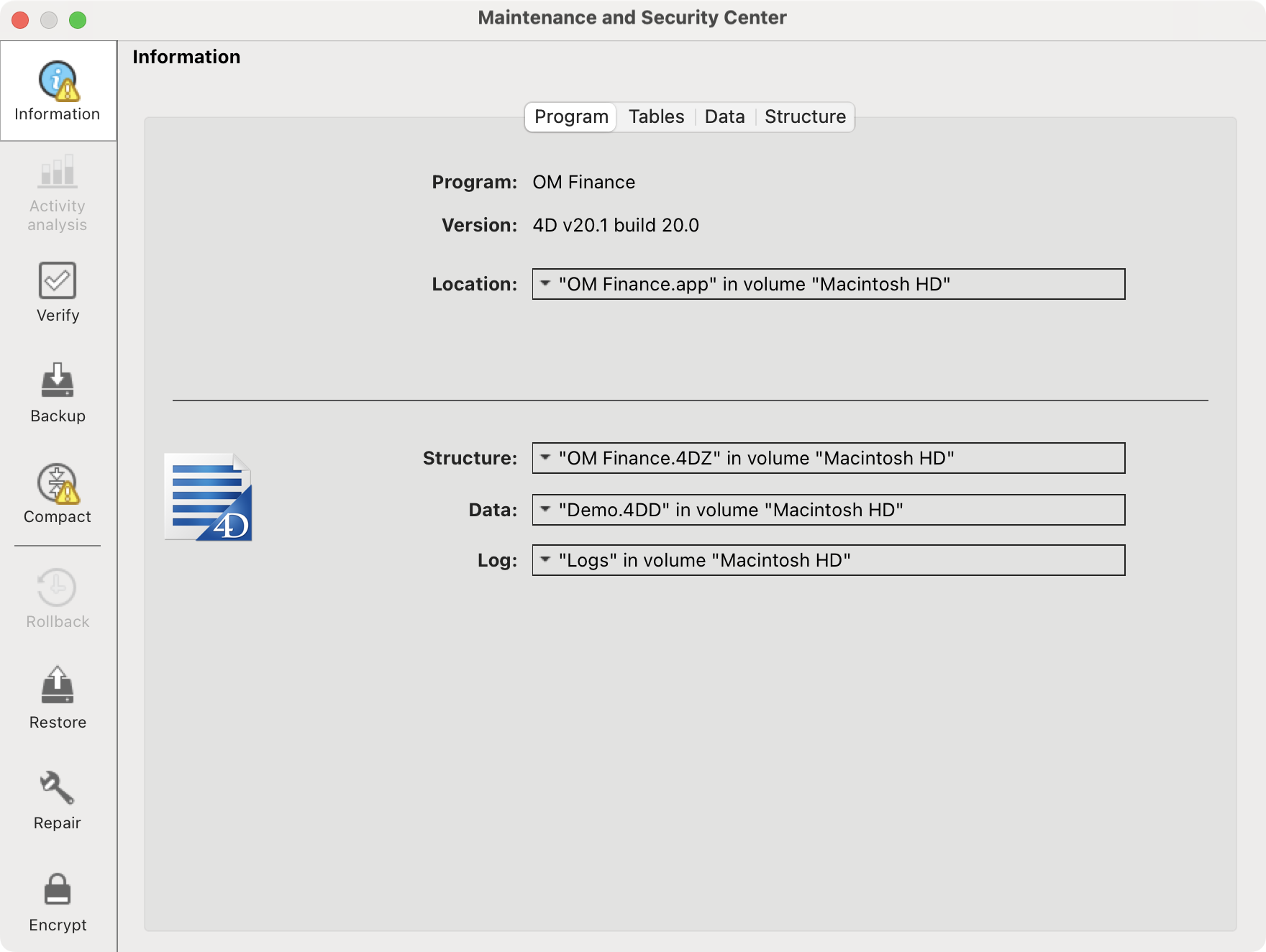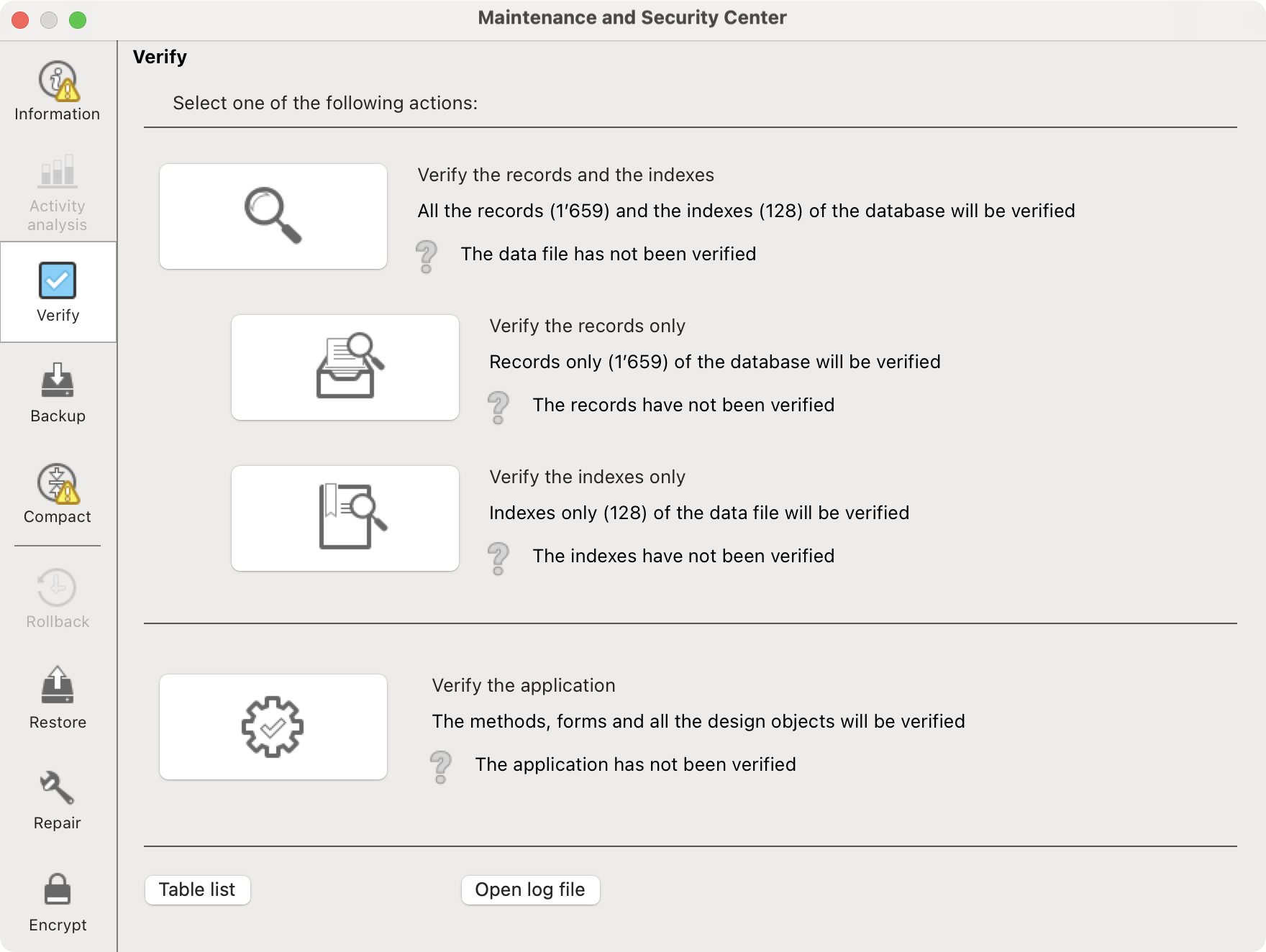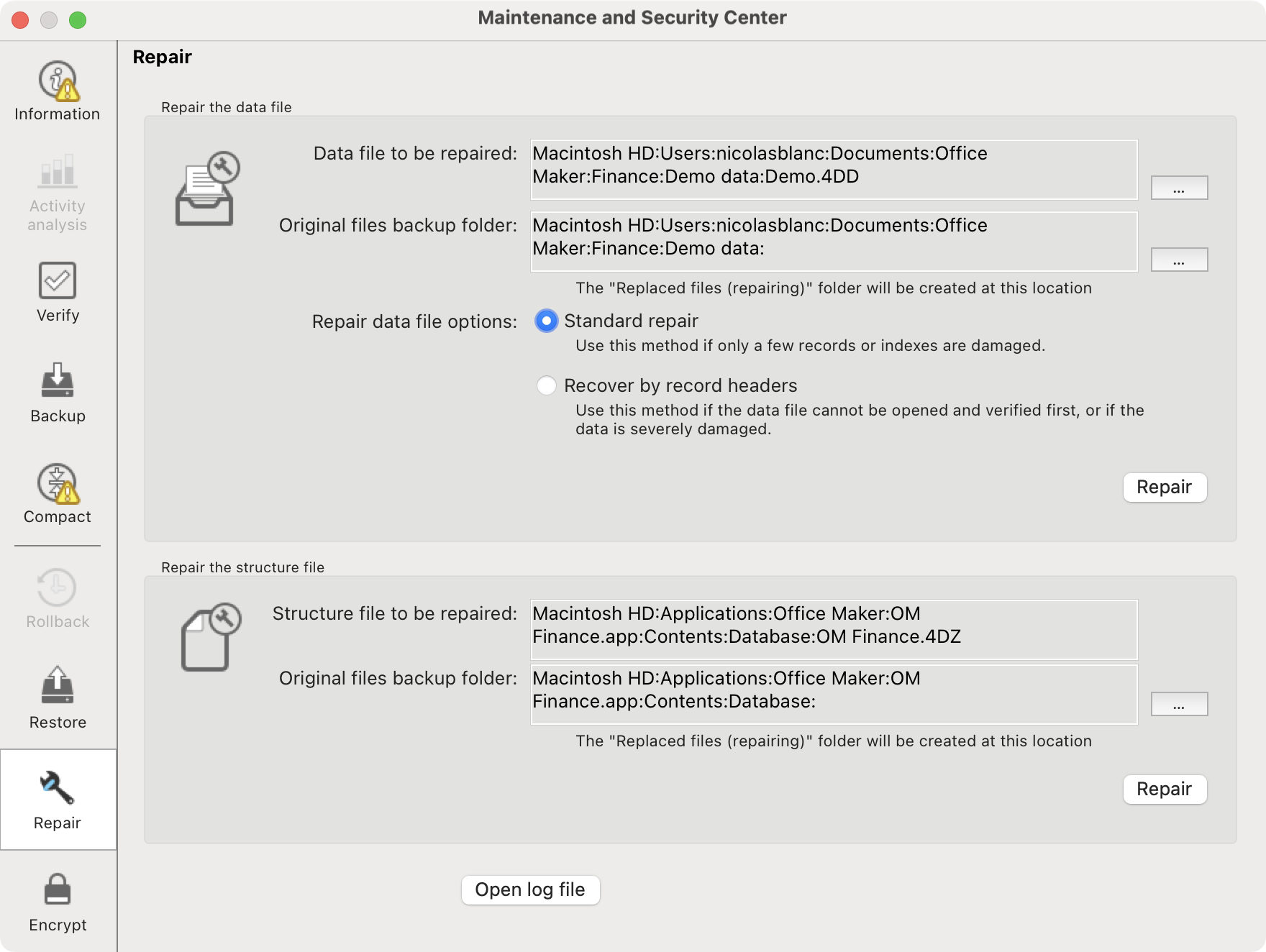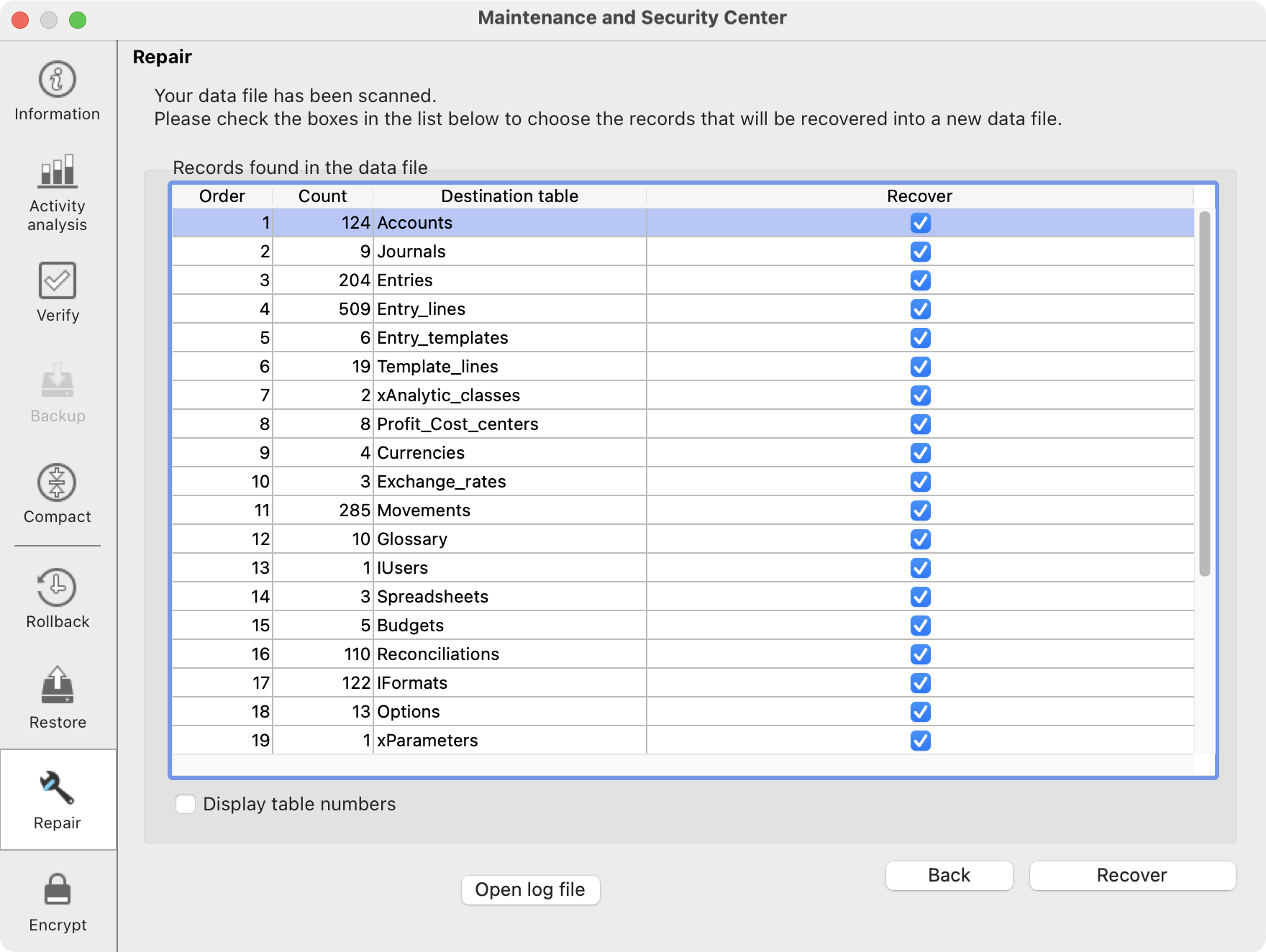Check and repair your data file
The data you enter with Office Maker or BiblioMaker is stored in a data file independent of the software. So if you update or reinstall the program, there's no risk of your data being deleted.
It may happen that your data file is damaged during use, for example as a result of a software or computer crash, a power failure, a defective disk, etc.
The Office Maker and BiblioMaker programs feature a data file verification and repair function described below.
Note: Hardware or software faults, mishandling or accidents can never be ruled out. The only way to protect yourself and limit the consequences is to perform a backup of your data file(s) as regularly and as often as possible.
You access the Maintenance and Security Center by first calling the File>Maintenance command, then the Maintenance>Maintenance and Security command.
This command is available only with the single-user version of the program. In the client version for a local server, the command is replaced by the Server administration command that opens the server administration window.

The Information page provides various information, including the location of the data file currently open. Make sure that this is the file you wish to check or repair.
To the left of the window, icons give access to the various functions on offer. We'll concentrate here on the essential functions.
Checking the data file
Click on the Verify button :

To check your data file, click on the Verify records and indexes button. Verification takes from a few seconds to several minutes, depending on the size of your file and the performance of your computer.
At the end of the operation, a message will indicate whether any errors were encountered. If so, click on the Open log file button to obtain further information.
If the errors concern records, you will need to repair the data file. If only indexes are affected, the simplest solution is to delete the file with the .4DIndx extension, which will be recreated the next time the software is started.
Repairing the data file
Note: if you feel uncomfortable with the following steps, it may be best to call in a specialist, such as a Micro Consulting technician. The security of your data depends on it.
Click on the Repair button :

Two repair functions are available :
- Standard repair
- Recover by record headers
Preferably use the second function, which is generally more effective. Click on the Scan and repair button.
Note: repairing the structure file is useless. The structure file belongs to the program, so in case the structure is damaged, the best solution is to reinstall the program.
A new dialog is displayed :

Make sure all checkboxes in the Recover column are ticked, then click on the Recover button.
Recovery takes from a few seconds to several minutes, depending on the size of your file and the performance of your computer. Finally, a message informs you whether the recovery was successful or not.
If successful, proceed with the verification of the repaired file (see above). If the verification is successful, simply continue to use the repaired version of your data file and delete the damaged file, which has been placed in a new folder named Replaced files (repairing) [repair date and time] next to the repaired file.
If this fails, try recovery again. If the second attempt also fails, a backup restore is the best solution.
 Français
Français Deutsch
Deutsch Italiano
Italiano